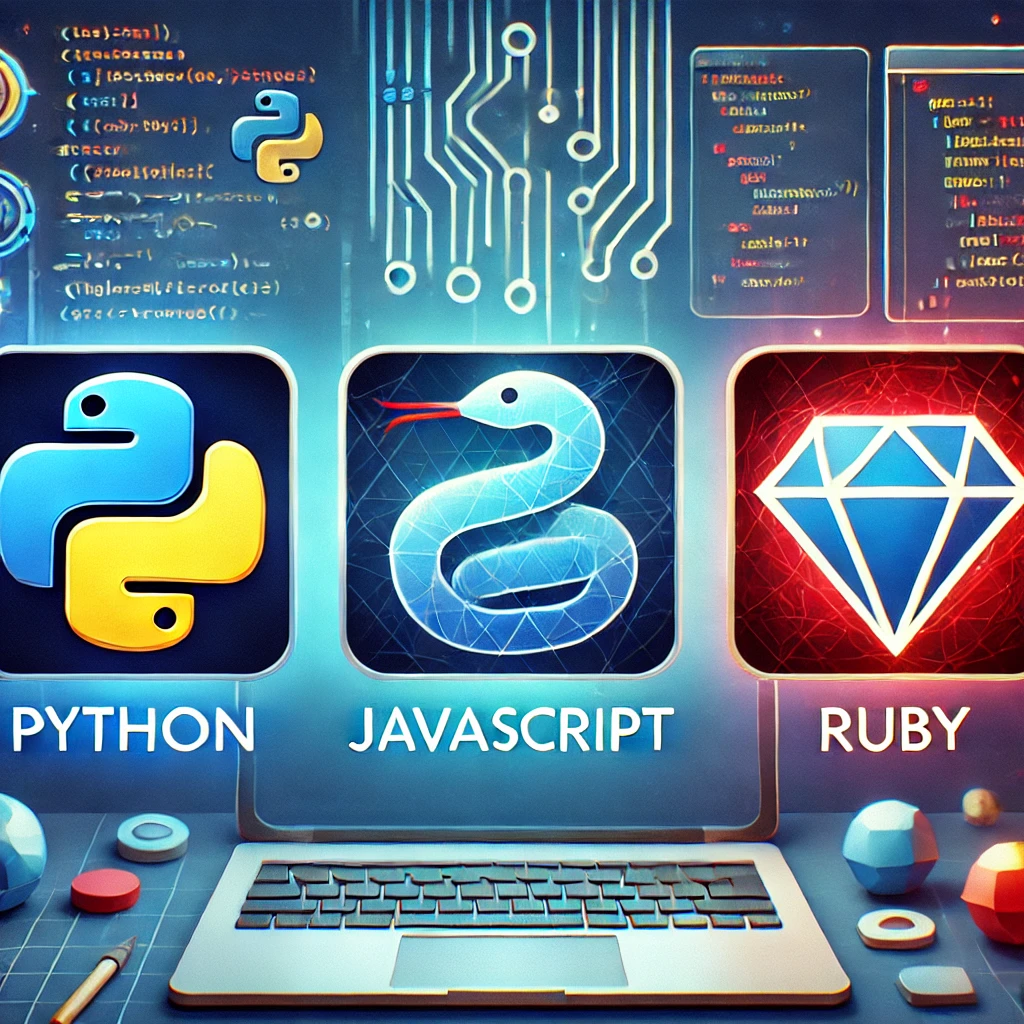Learning a programming language is an easy way to learn a new skill. There are hundreds of programming languages out there and not all of them are created equally. Some are easier to learn than others, some are more powerful, and some are just better suited to certain projects. In this blog post, I will discuss some of my top picks and explain why I believe they are the most suitable choices for newcomers in 2025.

Best Programming Languages for Newcomers in 2024: Top 3 Choices
Python is one of the most popular high-level programming languages in the world today. It is widely regarded for its simplicity, ease of use, and readability, making it an ideal language for beginners as well as experienced developers. The clean, straightforward syntax of Python allows for more focus on problem-solving and algorithm design, as opposed to getting bogged down in complex code structures. As a result, Python has gained a massive following across various domains, from web development to artificial intelligence and data science.
Python’s interpreted nature is a major factor in its accessibility. When executing Python code, it is processed line by line, making it simpler to debug and enabling developers to test and improve their code rapidly. Additionally, the language’s dynamic typing system increases its flexibility because developers are not required to explicitly declare variable types. This helps make the code shorter and simpler, improving readability and performance.
Python is widely used across several industries.
Python has shown itself to be extremely flexible, being utilized in various fields and industries. Python is often utilized in several important fields such as:
Python frameworks such as Django and Flask are commonly utilized in web development to create scalable, secure, and high-speed web applications. Django offers a single solution that simplifies managing both the backend and frontend tasks.
Python’s Popularity in Multiple Domains
Python has proven to be highly versatile, and its usage spans multiple fields and industries. Some of the key areas where Python is commonly used include:
Web Development: Python frameworks like Django and Flask are widely used for building scalable, secure, and fast web applications. Django, in particular, provides an all-in-one solution, making it easier to handle both the back end and front end of a web app with minimal effort. Additionally, Python’s flexibility allows developers to integrate it with other technologies like databases, cloud services, and third-party APIs.
Data Science and Analytics: Python is one of the most favored languages for data science, largely due to libraries such as NumPy, Pandas, Matplotlib, and Seaborn, which offer tools for handling, manipulating, and visualizing large datasets. Additionally, Python’s simplicity allows data scientists and analysts to focus on insights and decision-making rather than complex syntax, making it a top choice for professionals in this field.
Machine Learning and Artificial Intelligence: With the rise of artificial intelligence and machine learning, Python has cemented its place as a leading language in this domain. Libraries like TensorFlow, Keras, and Scikit-learn enable developers to build complex neural networks, train machine learning models, and apply AI to various problems, from natural language processing to image recognition.
Automation and Scripting: Python’s ease of use and flexibility make it ideal for automating repetitive tasks. Developers can use Python scripts to automate file operations, web scraping, and data extraction tasks. Automation using Python is especially valuable for businesses that need to streamline their workflow or handle large volumes of data.
Scientific Computing: In the scientific community, Python is favored for simulations, modeling, and computational tasks. Libraries like SciPy and SymPy offer robust capabilities for mathematical and scientific computations, making it the go-to language for researchers and scientists.
Game Development: Although Python is not primarily known for game development, it has libraries like Pygame, which make it easier to create simple games or prototypes. This aspect of Python is often used in educational settings, allowing students and hobbyists to learn the basics of programming through game development.
Benefits of Python
Readability: Python’s clear and concise syntax makes the code easy to read and understand, even for those who are new to programming. This is why it is often recommended as a first language for beginners.
Large Standard Library: Python comes with an extensive standard library that supports many common tasks such as file I/O, networking, data serialization, and more, reducing the need for third-party libraries in many cases.
Community Support: Python has a vast and active community that continuously contributes to its development and offers support. This large community means there are countless tutorials, forums, and documentation available, making it easier for beginners to find help and guidance.
Cross-Platform: Python is cross-platform, meaning it runs on various operating systems, including Windows, macOS, and Linux, without requiring modifications. This feature adds to its flexibility and appeal among developers.
Integration with Other Languages: Python integrates seamlessly with other programming languages such as C, C++, and Java. This allows developers to write performance-critical code in other languages while still leveraging Python for the overall structure of their applications.
JavaScript: The Backbone of Web Development
JavaScript is an incredibly popular programming language, particularly in web development. It’s a client-side scripting language that, along with HTML and CSS, forms the foundation of web development. JavaScript is responsible for making websites interactive and dynamic by enabling animations, form validation, content updates, and more.
JavaScript’s popularity is primarily due to its versatility and the growing demand for highly interactive websites. JavaScript’s applications are not limited to the client side. With the introduction of Node.js, JavaScript is also used for back-end development, enabling developers to write server-side applications.
Why JavaScript Is Essential for Web Development
- Core Web Technology: JavaScript, along with HTML and CSS, is one of the three core technologies of the World Wide Web. Every web browser supports JavaScript, making it an essential tool for any web developer.
- Interactivity: JavaScript allows developers to create highly interactive user experiences, such as dynamic content loading, form validation, and animations. This is a key aspect of modern web development, as users expect a responsive and engaging experience.
- Vast Ecosystem: JavaScript has a rich ecosystem of frameworks and libraries such as React, Angular, and Vue.js, which further enhance its capabilities for front-end development. These frameworks make it easier to build single-page applications (SPAs), mobile applications, and complex web platforms.
- Server-Side Capabilities: With Node.js, JavaScript can be used for back-end development, allowing developers to create full-stack applications using a single language.
Ruby: A Versatile and Beginner-Friendly Language
Ruby is a high-level, general-purpose programming language known for its simplicity and productivity. Its clean syntax makes it particularly appealing for beginners, while its powerful features allow for complex application development. Ruby is often associated with web development due to the popularity of the Ruby on Rails framework, which has been used to build numerous websites and web applications.
Ruby focuses on simplicity and productivity, with an emphasis on making code as human-readable as possible. This is why many developers choose Ruby for projects where rapid development and readability are essential.
Ruby’s Strengths
- Ruby on Rails: Ruby gained significant popularity with the introduction of Ruby on Rails, a powerful framework that simplifies the development of database-backed web applications. Rails follows the convention-over-configuration (CoC) philosophy, making it easy for developers to follow best practices without having to write boilerplate code.
- Human-Friendly Syntax: Ruby is often described as being “beautiful” or “elegant” due to its focus on writing code that is easy to read and understand. This makes it ideal for both beginners and experienced developers who value clean, maintainable code.
- Flexible and Dynamic: Ruby is a flexible and dynamic language, allowing developers to easily modify and extend its functionality. Its dynamic nature enables more freedom in writing and executing code without strict rules.
These are the Top 3 Best Programming languages for beginners in 2024. I hope this article will reach more people and it might be helpful to learn Programming languages for beginners. If you have any questions or concerns about this article, please contact us anytime at Contact@wizardlook.com Thank you for reading.




